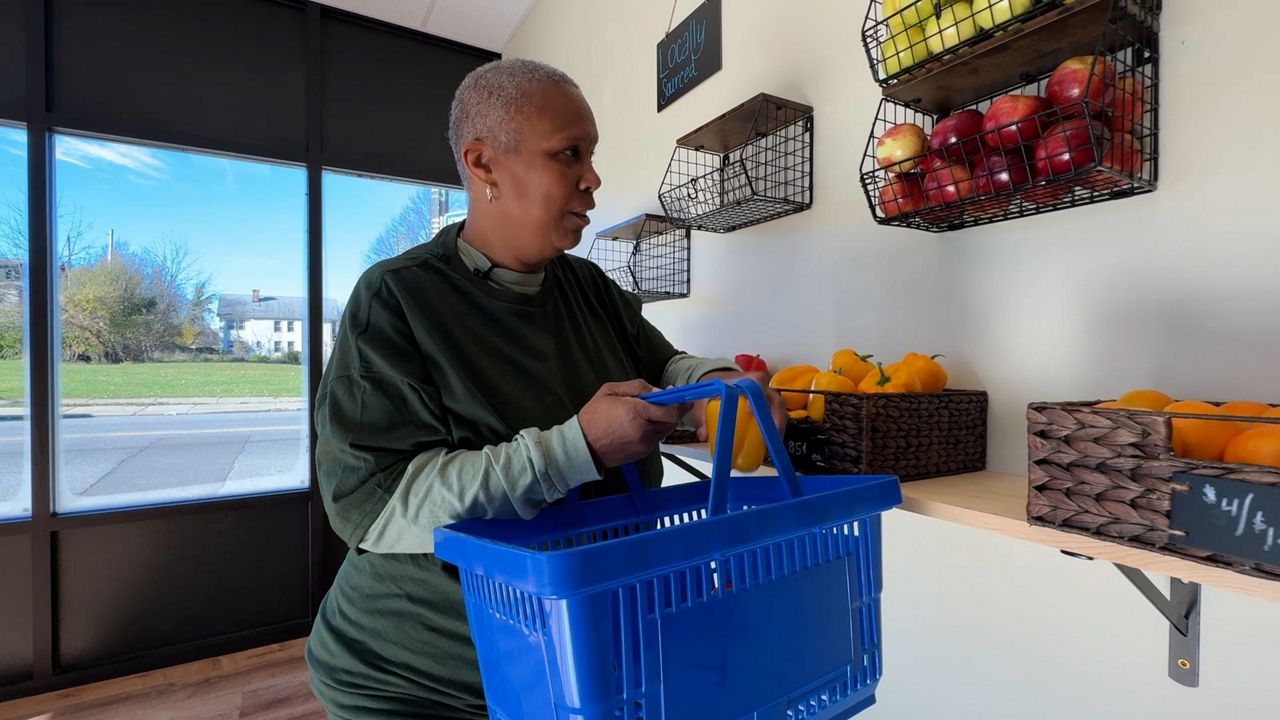BUFFALO, N.Y. — According to the Office of Minority Health, Black Americans are 30% more likely to die from heart disease. The risk of other related conditions is also increased, but how much of that is built in to the communities we live in?
Taking a look at a recent study done by the American Heart Association, heart disease, type 2 diabetes, high blood pressure and obesity have a direct link to communities who have been underserved and structurally targeted by old practices like redlining, or geographic and financial segregation. But the study also outlines solutions.
The nonprofit ‘Rooted in Love’ has recently opened the doors to ‘Truly Rooted Community Market,’ a small shop in a historic food desert.
“It’s reasonably priced, it’s for everybody and we’re going to be impactful,” said program director Tandra Parker. “It’s going back to the roots of how we were built, our families for generations. We were raised on fresh produce. We were raised on things that came from the earth. And we’re just bringing it back.”
One goal is to help the community understand that fresh produce goes a long way in changing health trends.
“Having this in their own backyard makes it accessible,” she added. “[It] makes it an option.”
It’s something a recent study led by Dr. Rebekah Walker and the American Heart Association dives into: how institutional racism has impacted that access to food like Truly Rooted.
“So we can’t change what happened in the past,” said Walker, associate professor in the Department of Medicine in the Jacobs School of Medicine and Biomedical Sciences at the University at Buffalo. “We can’t change the redlining, but we could change the food access in current neighborhoods if that explained the relationship.”
The first part of the process is just identifying the scientific link.
“Historic redlining measure was directly associated with these four health outcomes we were looking at. So diabetes, there’s higher diabetes in redlined neighborhoods, higher high blood pressure, more coronary heart disease and higher levels of obesity,” she said.
Researchers found the evidence and can relay information to the public.
“It suggests that if we can introduce some interventions that improve food access, we could break that relationship,” said Walker.
So what are some of those interventions and how do we take the science and the research and come up with a plan?
“What this analysis showed us is that that community-level food environment is really important,” said Walker. “So instead of just thinking about this as an individual and the food choices that they make, how can we change the environment that an individual lives in?”
Buy-in for more options in food deserts and underserved communities are options. For now, there are a growing number of organizations taking things into their own hands.
“It proves the point that offering people healthy options allows them to decrease some of the challenges that they face. In our hearts, we know this is good,” said Parker. “This is the stuff we know will be helpful.”
Hearing from both a local volunteer grocer to the lead author of that study, one thing that really resonates is the buy-in of partners. It could be that larger supermarket that comes in could be a health care system that provides sponsorships and aid in the neighborhoods. The more money invested where patients are, the less potential health issues could arise and the next generation could see a very different study.





